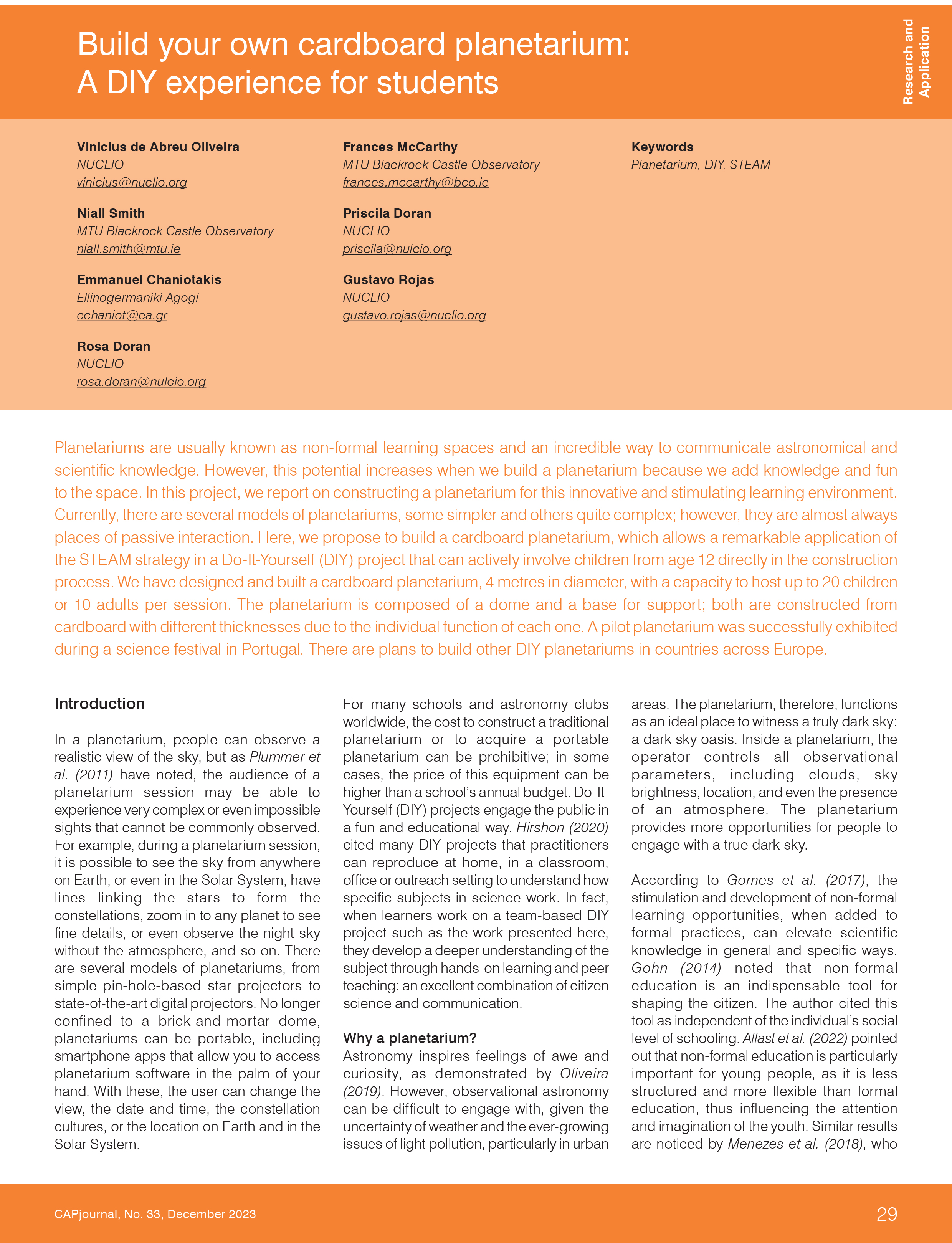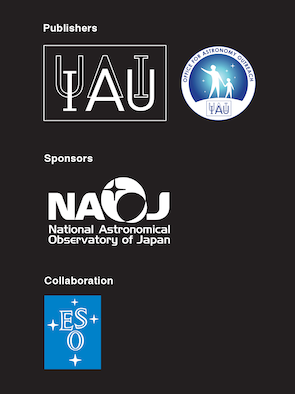|

Download this article
- PDF (2 MB)
Back to the Table of Contents
|
Build your own cardboard planetarium: A DIY experience for students (page 29)
Oliveira, V., McCarthy, F., Smith, N., Doran, P., Chaniotakis, E., Rojas, G., and Doran, R.
Planetariums are usually known as non-formal learning spaces and an incredible way to communicate astronomical and scientific knowledge. However, this potential increases when we build a planetarium because we add knowledge and fun to the space. In this project, we report on constructing a planetarium for this innovative and stimulating learning environment. Currently, there are several models of planetariums, some simpler and others quite complex; however, they are almost always places of passive interaction. Here, we propose to build a cardboard planetarium, which allows a remarkable application of the STEAM strategy in a Do-It-Yourself (DIY) project that can actively involve children from age 12 directly in the construction process. We have designed and built a cardboard planetarium, 4 metres in diameter, with a capacity to host up to 20 children or 10 adults per session. The planetarium is composed of a dome and a base for support; both are constructed from cardboard with different thicknesses due to the individual function of each one. A pilot planetarium was successfully exhibited during a science festival in Portugal. There are plans to build other DIY planetariums in countries across Europe.
Suggested Citation (APA)
Oliveira, V., McCarthy, F., Smith, N., Doran, P., Chaniotakis, E., Rojas, G., and Doran, R. (2023). Build your own cardboard planetarium: A DIY experience for students. Communicating Astronomy with the Public Journal, 33, 29-33. https://www.capjournal.org/issues/33/33_29.pdf
|

